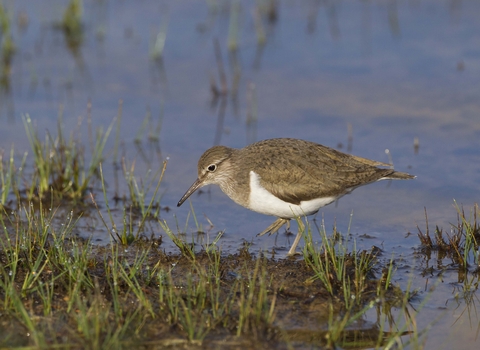
©Mark Hamblin/2020VISION
Common sandpiper
The common sandpiper breeds along rivers, and by lakes, reservoirs and lochs in upland Scotland, Northern England and Wales. It can be spotted as a passage migrant at many inland wetlands across the UK.
Scientific name
Actitis hypoleucosWhen to see
January to DecemberTop facts
Category
Stats
Length: 19-21cmWingspan: 40cm
Weight: 50g
Average lifespan: 8 years
Classified in the UK as Amber under the Birds of Conservation Concern 5: the Red List for Birds (2021).
